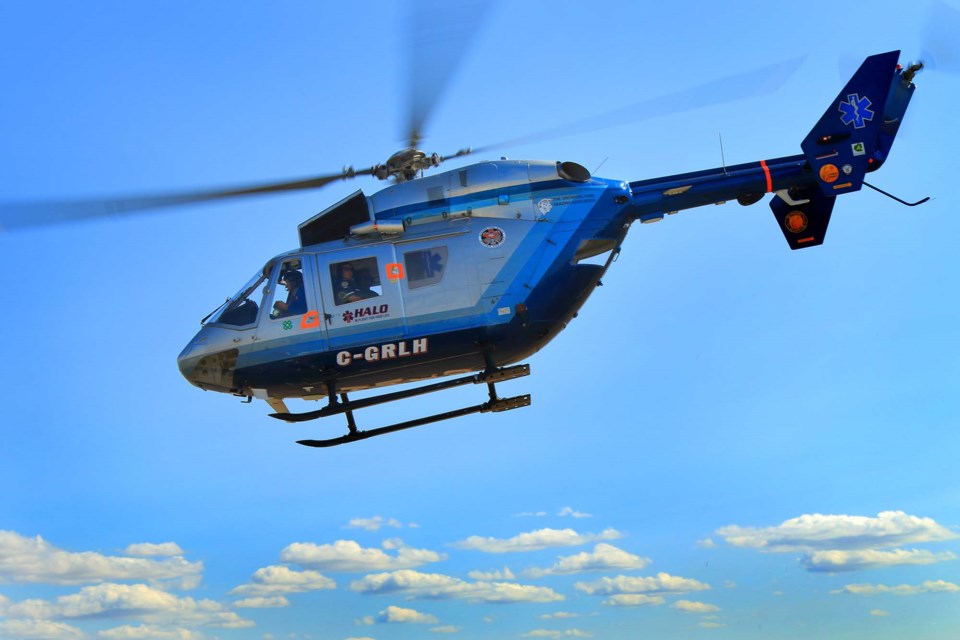Communities in southern Alberta are worried about the continuation of their air ambulance program.
In November Rural Municipalities of Alberta held its annual fall convention and president Paul McLauchlin said southern residents want stable, predictable funding for their air ambulance service, known as HALO Air Ambulance.
They don’t want to see the program amalgamate with STARS Air Ambulance.
“We are really concerned they are going to try and replace it with STARS.”
In the summer, the province released a report on helicopter emergency medical services and while HALO CEO Paul Carolan said he agrees with many of the recommendations, he doesn’t think HALO should become part of the STARS response team.The report recommended air ambulance programs be amalgamated under one umbrella, but Carolan said there is value in having a locally operated service that can quickly respond to the needs of southern Alberta residents.
“The review focused specifically on one operator and there's a number of pitfalls and risks that go along with that and it doesn’t necessarily increase coverage to Albertans,” he said.
HALO, formed in 2007, and is based out of Medicine Hat and responds to all air ambulance calls in southeast Alberta. Previously HALO responded to calls in the region, but was based out of Calgary, and it was taking a long time for them to arrive. The region also relied on ground ambulance services when needed.
Carolan said leaving in a helicopter out of Calgary to respond to a call in southern Alberta would usually require a stop to refuel in Medicine Hat, slowing down response times when time is of the essence.
Cypress County Reeve Dan Hamilton said getting someone to a hospital quickly is important in an emergency and having someone fly out of Medicine Hat rather than Calgary can dramatically improve outcomes for someone who is suffering from a medical crisis.
It would be impossible to set up skilled medical specialists in every corner of the province, Carolan said, but HALO provides rural residents, who don’t live close to a big centre, timely and quality medical support.
“What is reasonable is for people that live in rural Alberta to expect to be able to receive that same care. And an organization like HALO … is able to bring someone to that care as opposed to all of the expenses and infrastructure that would go to bringing that care out to every part of the province,” Carolan said.
HALO responds to around 200 calls for service per year with an annual budget of $3 million, which is mostly funded through municipalities and fundraising. While HALO responds to many medical calls, HALO also conducts search and rescue efforts and responds to calls from both fire and police services.
Around 20 per cent of the funds come from municipalities, roughly six per cent comes from a fee-for-service from Alberta Health, and the organization fundraises the remaining roughly 75 per cent.
Hamilton said Cypress County pays $320,000 per year for the service because HALO responds to many calls in the county.
Instead of folding the air ambulance into STARS, Hamilton and other southern Alberta leaders want to see the province provide funding to help support the organization.
“What HALO needs is sustainable and predictable funding,” Hamilton said.
The organization doesn’t want to be completely funded by the province, Carolan said, but rather wants to see the province pay one third of the cost. The goal is to have the public pay one third through fundraising, municipalities pay another third, and have the province chip in the final third.



